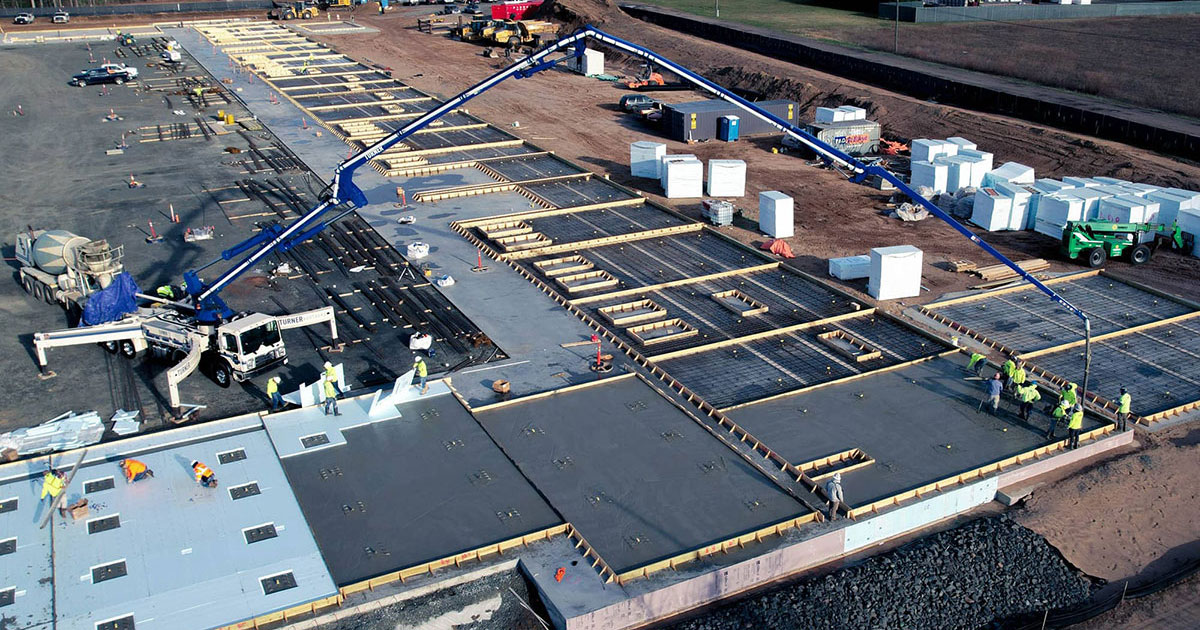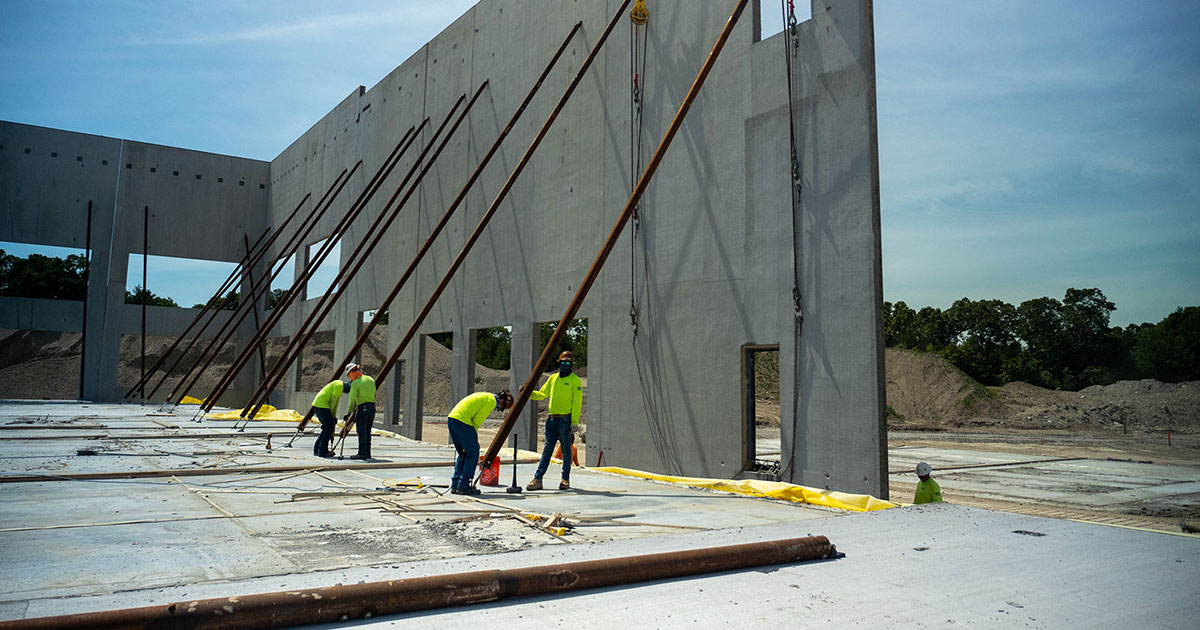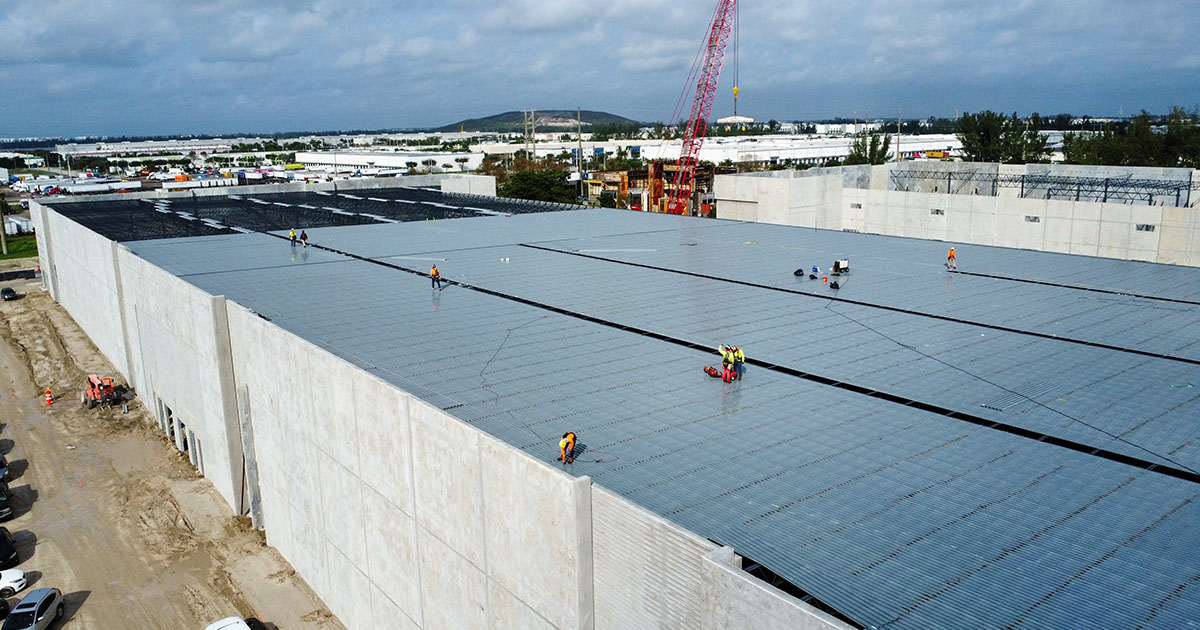
Civil Engineering Web Design: Create a Website That Drives Business
For civil engineering firms, a website serves as more than just an online presence—it is a critical tool for building trust, showcasing expertise, and attracting new clients. Civil engineering web design requires a combination of functionality, aesthetics, and strategic content to effectively communicate complex capabilities and engage visitors. Whether your firm focuses on infrastructure, transportation, land development, or other civil engineering specialties, your website should reflect your commitment to precision, innovation, and reliability.
In this blog post, we’ll explore the key elements of effective civil engineering web design, covering everything from user-friendly layouts and SEO strategies to engaging content and project portfolios that highlight your firm’s expertise.
1. Why Civil Engineering Firms Need a Strong Web Design
A professional website is a key element of any civil engineering firm’s marketing strategy. It serves as a central hub for potential clients, partners, and industry stakeholders to learn more about your services, expertise, and completed projects.
Benefits of a High-Quality Website:
- Builds Credibility: A well-designed site positions your firm as a reliable, capable partner in the civil engineering industry.
- Showcases Expertise: Use your website to highlight complex projects, innovative solutions, and client success stories.
- Drives Lead Generation: Strategic calls-to-action (CTAs) and contact forms help convert website visitors into potential clients.
- Increases Visibility: SEO optimization ensures your firm ranks well in search results, making it easier for potential clients to find you.
A high-performing website helps your firm stand out from competitors and communicates your value proposition effectively.
2. Key Features of Effective Civil Engineering Web Design
To create a website that resonates with potential clients and builds trust, it’s important to focus on features that enhance user experience, showcase your expertise, and encourage conversions.
Detailed Service Pages
Your website should clearly communicate the civil engineering services your firm offers, along with the unique benefits you provide. Dedicated service pages allow you to go into detail about your expertise and capabilities.
Tips for Creating Service Pages:
- Separate Pages for Different Services: Create individual pages for key services, such as land surveying, transportation engineering, or environmental consulting.
- Visuals and Technical Content: Use diagrams, videos, or infographics to explain complex services or processes.
- Client-Centric Language: Clearly explain how your services address client needs and challenges, balancing technical detail with easy-to-understand language.
Comprehensive service descriptions help potential clients understand your capabilities and position your firm as a leader in civil engineering.
Building a Project Portfolio to Showcase Expertise
A project portfolio allows you to demonstrate your firm’s capabilities and highlight successful projects. Civil engineering projects often involve complex challenges, making it important to showcase your problem-solving skills and innovative solutions.
How to Create an Effective Portfolio:
- High-Quality Images: Use professional photos, renderings, or videos to showcase completed projects and stages of development.
- Detailed Case Studies: Include project goals, challenges faced, the engineering solutions you implemented, and the results achieved.
- Categorization: Organize projects by type, such as “Transportation,” “Infrastructure,” or “Environmental Engineering.”
A compelling portfolio builds trust with potential clients by showing real-world examples of your firm’s work and capabilities.
Search Engine Optimization (SEO) for Greater Visibility
SEO ensures that your civil engineering website ranks well on search engines, making it easier for potential clients to find your services. An optimized site can drive more traffic, generate leads, and enhance your reputation as an industry leader.
SEO Strategies for Civil Engineering Websites:
- Keyword Research: Identify relevant search terms, such as “civil engineering services,” “transportation infrastructure design,” or “[City] land development.”
- On-Page Optimization: Use keywords strategically in meta titles, descriptions, headers, and throughout your content.
- Local SEO: Optimize for location-based searches if your firm serves specific regions. Claim and optimize your Google My Business profile.
- Content Creation: Regularly publish blog posts, guides, and case studies that provide valuable insights to your audience.
Effective SEO can significantly increase your website’s visibility and reach, attracting more qualified leads.
Responsive and Mobile-Friendly Design
A responsive website automatically adjusts to different screen sizes, providing an optimal experience for users on desktops, tablets, and smartphones. Given the prevalence of mobile browsing, a mobile-friendly design is essential for civil engineering firms.
Benefits of Responsive Design:
- Enhanced User Experience: Visitors can navigate your site easily, regardless of the device they use.
- Improved SEO: Search engines prioritize mobile-friendly websites, boosting your rankings in search results.
- Wider Reach: Ensures your site is accessible to all potential clients, whether they’re in the office or on the go.
A responsive design demonstrates your firm’s attention to detail and commitment to modern technology.
3. Engaging Content Strategy to Build Trust and Authority
High-quality content helps position your civil engineering firm as a thought leader, building trust and engaging your audience. A strong content strategy can drive traffic, improve SEO, and demonstrate your expertise.
Content Ideas for Civil Engineering Websites:
- Blog Posts: Write about industry trends, innovative engineering practices, and solutions to common challenges.
- Case Studies: Highlight successful projects with in-depth case studies, including visuals and detailed analyses.
- Whitepapers and Guides: Offer comprehensive reports on topics such as “Sustainable Infrastructure Solutions” or “Urban Planning Challenges.”
- Video Content: Use videos to explain technical concepts, showcase projects, or introduce your team.
Consistent, engaging content builds credibility and keeps visitors returning to your site.
4. Calls-to-Action (CTAs) to Drive Engagement
Your website should guide visitors toward taking specific actions, such as contacting your firm, requesting a consultation, or downloading a resource. Calls-to-action (CTAs) play a crucial role in converting visitors into leads.
Effective CTAs for Civil Engineering Websites:
- “Request a Consultation”: Invite potential clients to discuss their project needs with your team.
- “View Our Projects”: Encourage visitors to explore your portfolio for a deeper understanding of your capabilities.
- “Download Our Whitepaper”: Offer valuable industry resources in exchange for visitor contact information.
Strategic CTAs can boost engagement, helping you generate and nurture valuable leads.
5. Incorporating Client Testimonials and Social Proof
Potential clients want to know that your firm can deliver successful projects. Client testimonials and case studies provide valuable social proof that builds trust and credibility.
How to Use Testimonials Effectively:
- Project-Specific Testimonials: Highlight client feedback related to specific projects, showcasing your ability to meet and exceed client expectations.
- Video Testimonials: Consider using videos for a more engaging, personal touch.
- Integrate Testimonials Throughout Your Site: Place testimonials on service pages, your homepage, and within your project portfolio.
Testimonials help demonstrate your firm’s expertise and reliability, making it easier for potential clients to choose your services.
6. Optimized User Experience (UX) and Navigation
A positive user experience (UX) ensures visitors stay on your site longer and engage with your content. Effective web design focuses on making navigation intuitive and straightforward.
Tips for Optimized UX:
- Simple Menus: Use clean, organized menus to make navigation easy.
- Fast Load Times: Optimize images and code for fast load speeds, enhancing user experience.
- Search Functionality: Consider adding a search bar to help users quickly find content or services.
Optimized UX keeps visitors engaged, reducing bounce rates and increasing conversion potential.
7. Security and Performance Optimization
A secure, high-performing website builds trust with visitors and ensures a positive user experience. Performance optimization and security features are critical for protecting client data and improving engagement.
Best Practices for Security and Performance:
- HTTPS Encryption: Protects data transmitted between your website and users.
- Regular Updates: Keep your content management system and plugins up-to-date.
- Optimize for Speed: Compress images and streamline code to improve load times.
A secure, fast website reflects your firm’s commitment to quality and professionalism.
8. Highlighting Industry Certifications, Licenses, and Accreditations
Civil engineering firms often hold specific certifications and licenses that differentiate them from competitors. Including these prominently on your website can build credibility and trust with potential clients.
Tips for Showcasing Certifications and Licenses:
- Dedicated Section or Page: Create a section to highlight industry accreditations, awards, and any relevant certifications your firm holds, such as ISO certifications or professional engineering licenses.
- Visual Recognition: Use badges or logos of associations and certifications to quickly communicate your credentials.
- Contextual Integration: Mention relevant certifications within case studies or service pages to reinforce your qualifications in context.
This helps visitors immediately understand your firm’s commitment to quality, compliance, and industry standards.
9. Emphasizing Sustainability and Innovation Initiatives
With increasing demand for environmentally conscious and innovative solutions, civil engineering firms can gain a competitive edge by emphasizing their approach to sustainable practices.
Ways to Showcase Sustainability and Innovation:
- Sustainability-Focused Projects: Highlight projects that incorporate green building principles, renewable energy, or low-impact design.
- Content on Eco-Friendly Practices: Publish blog posts, whitepapers, or guides about sustainable materials, infrastructure, and innovative engineering techniques.
- Dedicated Sustainability Page: Provide an overview of your commitment to sustainability, including green certifications or industry initiatives you support.
This content positions your firm as a leader in sustainable and forward-thinking engineering solutions.
10. Interactive Features to Enhance User Engagement
Adding interactive features can engage visitors and help communicate complex engineering concepts more effectively.
Examples of Interactive Elements:
- Project Timelines: Use interactive timelines to showcase project milestones and progress.
- 3D Models and Simulations: Provide immersive 3D models or visual simulations of key projects, allowing visitors to explore designs in detail.
- Interactive Maps: Display maps that highlight completed projects across different regions or areas of expertise.
Interactive content makes your website memorable and demonstrates your firm’s expertise in a tangible way.
11. Integrating Client Portals for Project Collaboration
For civil engineering firms that manage large, ongoing projects, integrating client portals can streamline collaboration and communication.
Client Portal Features:
- Document Sharing and Collaboration: Securely share project plans, blueprints, reports, and documents with clients.
- Real-Time Progress Updates: Provide clients with real-time updates on project milestones and changes.
- Messaging and Communication Tools: Offer direct communication channels for clients to contact project managers or support staff.
Client portals enhance transparency, improve project communication, and showcase your firm’s commitment to efficient project management.
12. Social Media Integration for Broader Reach
Connecting your website to social media platforms can help broaden your reach, engage with clients, and showcase your firm’s projects and industry involvement.
Social Media Integration Tips:
- Live Updates: Share updates, behind-the-scenes project views, and industry news through linked social media profiles.
- Social Proof and Client Interaction: Feature testimonials, project feedback, and client interactions on your social media channels and embed this content on your website.
- Share Buttons: Allow visitors to share blog posts, case studies, or project pages on their social media networks.
This integration helps amplify your firm’s content, improve visibility, and increase engagement with clients and industry peers.
13. Prioritizing Accessibility for Inclusive Design
Ensuring your website is accessible to all users, including those with disabilities, demonstrates a commitment to inclusivity and compliance with accessibility standards (e.g., WCAG).
Accessibility Best Practices:
- Alt Text for Images: Provide descriptive alt text for images to ensure accessibility for visually impaired users using screen readers.
- Keyboard Navigation: Make all site functionality accessible via keyboard for users with mobility impairments.
- Readable Fonts and Color Contrast: Ensure that fonts are easy to read and maintain strong color contrast between text and backgrounds.
An accessible website broadens your reach and enhances user experience for everyone.
14. Creating Thought Leadership Content
Thought leadership content establishes your firm as a trusted authority in the civil engineering industry. Sharing in-depth insights and expertise builds trust with potential clients.
Types of Thought Leadership Content:
- Industry Analysis Articles: Share your insights on market trends, regulatory changes, and technological advancements impacting civil engineering.
- Expert Roundtables and Interviews: Feature interviews with key team members or industry experts on relevant topics.
- Webinars and Online Events: Host webinars on topics like “Challenges in Urban Infrastructure” or “The Future of Smart Cities,” providing valuable insights to your audience.
This type of content positions your firm as a knowledge leader and a go-to source for industry expertise.
15. Analytics and Continuous Website Optimization
Regularly tracking and analyzing website performance allows you to refine your strategies and make data-driven improvements to enhance user engagement and lead generation.
Metrics to Monitor:
- Traffic Sources: Understand where your visitors are coming from and which channels drive the most engagement.
- Bounce Rates and User Engagement: Identify pages with high bounce rates and optimize content to retain visitors.
- Conversion Rates: Track the effectiveness of calls-to-action, contact forms, and other lead generation tools.
- Page Load Times: Optimize images and code to improve load speeds and reduce bounce rates.
Continuous optimization ensures your website remains a high-performing marketing asset.
16. Highlighting Team Expertise and Culture
An About Us page that emphasizes your team’s expertise, culture, and values can create a strong connection with potential clients.
Elements to Include:
- Team Member Bios: Showcase key personnel with bios that emphasize their experience, qualifications, and role within the firm.
- Company History and Milestones: Share your firm’s journey, mission, and major achievements.
- Company Values: Highlight your commitment to quality, safety, sustainability, or other core values.
Humanizing your brand helps potential clients see the passion and expertise behind your work.
Designing a High-Impact Civil Engineering Website
Effective civil engineering web design goes beyond aesthetics, requiring a strategic blend of user experience, engaging content, strong SEO, and compelling features to convert visitors into clients. By prioritizing responsive design, project portfolios, client testimonials, and interactive elements, you can create a website that communicates your expertise, builds credibility, and drives meaningful business growth.
Investing in a high-performing website is an essential step to establishing your firm as a leader in the civil engineering industry, attracting clients, and building lasting relationships.










